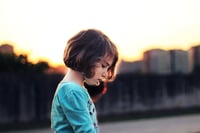The use of second-generation antipsychotics (SGAs) by pregnant women enrolled in Medicaid rose more...
Prescribing of Antipsychotics to Young Children Is Declining, Study Suggests

The percentage of young children with private insurance who were prescribed antipsychotics declined from 2009 to 2017, according to a study published in the Journal of the American Academy of Child and Adolescent Psychiatry. This decline “may reflect a trend towards more cautious prescribing,” wrote Greta A. Bushnell, Ph.D., of Rutgers School of Public Health and colleagues.
While several antipsychotics have been approved by the FDA for use in children with schizophrenia, bipolar disorder, and tic disorders, the number of off-label antipsychotic prescriptions to treat conduct disorder, attention-deficit/hyperactivity disorder (ADHD), anxiety, and depression in children began to climb in the late 1990s, noted Bushnell and colleagues. As these numbers grew, concerns mounted over the unknown developmental and other long-term adverse effects of antipsychotics on young children. Several efforts have since been made to curtail inappropriate antipsychotic prescribing to young people, including peer review prior authorization before atypical antipsychotics can be prescribed to young children insured by Medicaid.
For the current study, the authors examined trends in antipsychotic prescribing to children aged 2 to 7 years who were privately insured, as recorded in a commercial claims database. The authors specifically focused on children who received prescriptions for first- and second-generation antipsychotics from 2007 through 2017. To estimate annual antipsychotic use, the researchers divided the number of children who were dispensed at least one antipsychotic medication during each study year by the total number enrolled with prescription coverage in July of that year.
There were 301,311 antipsychotic prescriptions filled for children aged 2 to 7 between 2007 and 2017. The authors found that prescription antipsychotic use grew from 0.27% (27 per 10,000 children) in 2007 to 0.29% in 2009, before dropping to 0.17% in 2017—a decline of 0.017% per year. Antipsychotic use was highest in boys aged 6 to 7 years, rising from 2007 (0.85%) to a peak in 2009 (1.01%) and declining through 2017 (0.59%). In girls aged 6 to 7 years, antipsychotic use was 0.27% in 2007, peaked at 0.30% in 2009, and declined to 0.18%.
“Despite these encouraging trends, however, much antipsychotic use in young children continues to take place in children diagnosed only with conditions lacking effectiveness and safety data,” the authors noted. The most common diagnoses among children prescribed antipsychotics were pervasive developmental disorder, including intellectual disabilities; conduct or disruptive disorder; and ADHD.
“Guidelines recommend careful assessment before children initiate antipsychotics and recommend psychosocial services before antipsychotic treatment or combining pharmacological and psychosocial treatments when possible. Yet, fewer than half of young children receiving antipsychotic treatment had a visit with a psychiatrist or a psychotherapy claim, a finding consistent with reports in privately insured children from a decade earlier,” the authors added. “These findings, and the remaining substantial number of children treated with antipsychotics who do not receive psychosocial mental health interventions, suggest that there remains room for improvement in the community treatment of young children with antipsychotic medications.”
For related news, see the Psychiatric Services article “Designing Safer Use of Antipsychotics Among Youths: A Human-Centered Approach to an Algorithm-Based Solution.”
(Image: iStock\SinanAyhan)
Don't miss out! To learn about newly posted articles in Psychiatric News, please sign up here.






